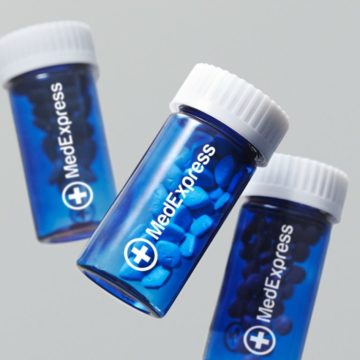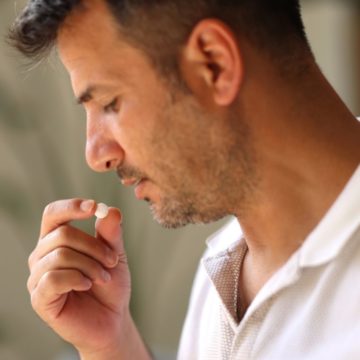Erectile dysfunction is a big problem for today’s men, with a multitude of different causes. We’ve discussed many of these in detail before. Needless to say, the variety of causes, as well as the large spectrum of different lifestyles lived by the range of sufferers; means there’s a wide selection of different treatments available. Broadly speaking, erectile dysfunction treatments fall into two distinct categories: specific types of medication and devices, or lifestyle changes. Following one treatment or combining lifestyle changes with one of the available choices of medication, can allow men to take back control of their lives, and in some cases conquer erectile dysfunction for good. Below, we take a look at what treatments are available for erectile dysfunction in the UK.
Prescription-based treatment
There are a variety of different drugs available to men who are searching for the solution to their erectile dysfunction. Many have side effects, which can vary from person to person, based on a number of genetic and environmental factors. The primary pharmaceutical prescription based remedies used in erectile dysfunction treatment are all Phosphodiesterase-5 (PDE-5) inhibiting drugs; meaning that, broadly speaking, they all act in a similar manner.
Sildenafil/Viagra treatment
Sildenafil is sold by Pfizer as Viagra and is the best-known prescription pharmacological treatment for erectile dysfunction. Sildenafil treatment acts by inhibiting the effects of the naturally-occurring PDE-5 compound. This leads to greater potency, by increasing penile blood flow required for a successful erection. It is a commonly-held fallacy that Sildenafil usage provides instant or uncontrollable effects. Sexual arousal and stimulation are still very much required to have, and maintain, an erection – even when using Sildenafil. While available in different strengths, Viagra normally takes between 30 – 60 minutes to take effect, and it generally lasts around four hours. Like many other PDE-5 inhibitors, the effects of Sildenafil can be stalled or diminished by consuming food during the hour before or after the administered dose; especially if the food in question was particularly fatty.
Tadalafil/Cialis treatment
Tadalafil lasts for up to 36 hours, and takes effect after 15 to 20 minutes. Tadalafil is also more selective with its focus and has a more inhibitory effect than Sildenafil and Vardenafil.
Vardenafil/Levitra treatment
Vardenafil is sold as Levitra, and is extremely similar to Sildenafil. The primary differences between the two drugs is the slightly longer average duration of Vardenafil – which can last for around five hours.
Avanafil/Spedra treatment
Avanafil is sold under the brand name Spedra, and is faster to act than both Vardenafil and Sildenafil. Avanafil also lasts as long as Vardenafil.
Alprostadil treatment
When a case of erectile dysfunction has proved resistant to the drugs above, or existing medical conditions prevent the use of PDE-5 inhibitors, Alprostadil can be used as alternative. Unlike PDE-5 inhibitors, Alprostadil isn’t taken orally, and must instead be taken as either a penile suppository, or as an injection. The more invasive method of drug delivery ensures a faster response time than many of the other alternatives.
If you’re not keen on using medication, here are some alternatives – although for hard-to-solve cases, surgery or hormone therapy may be necessary courses of action.
Vacuum Pumps
Vacuum pumps form a vacuum seal around the penis, causing an erection. The erection is maintained via an elastic ring placed around the base of the penis, which prevents additional blood from leaving the engorged penis. One of the primary advantages of using a vacuum pump is the minimal number of negative side effects. Erections that have been induced through this method will generally last for around 30 minutes.
Treating underlying medical conditions
Taking erectile dysfunction medication can be inadvisable for those with heart or circulatory complaints, as it can dangerously interact with the medication that the patient is already taking. Lifestyle changes can be the answer, but they are harder to maintain over the long-term. It’s important to consult a doctor for advise if you are suffering from medical conditions.
Losing weight
Being overweight can directly contribute to erectile dysfunction. If you are healthy, there’s less chance you’ll develop erectile dysfunction. An increased risk of cardiovascular disease among the obese can impede erectile function. Therefore, regular exercise can help to solve erectile dysfunction.
Reducing stress levels
Stress has a wide variety of definitions. There’s professional stress, low self-esteem and low confidence – all of these can lead to impotency. In such cases, therapy and lifestyle changes can help.
Giving up smoking
Smoking can also be a major contributing factor to erectile dysfunction. In much the same way as with obesity, the effect that smoking has on the cardiovascular system restricts blood flow, making it that much more difficult for the body to maintain the physiological conditions necessary to create or maintain an erection.
Giving up illegal drugs
The abuse of illegal drugs also has many of the same associated health risks as smoking and obesity, meaning that they can cause erectile dysfunction through having a negative impact on a patient’s circulatory system. However, illegal drug abuse can place a patient beyond the reach of existing erectile dysfunction treatments, as damage can extend to the nervous system as well as the patient’s circulatory system. While damage to the circulatory system can be treated or medicated for, damage to the nervous system is much more difficult to correct; so illegal drug abuse can potentially lead to permanent impotence.
Further reading:
- What are the causes of erectile dysfunction?
- What are the differences between Viagra and Sildenafil?
- What effect does alcohol have Viagra and Cialis?
- What are the differences between Spedra and Viagra?




